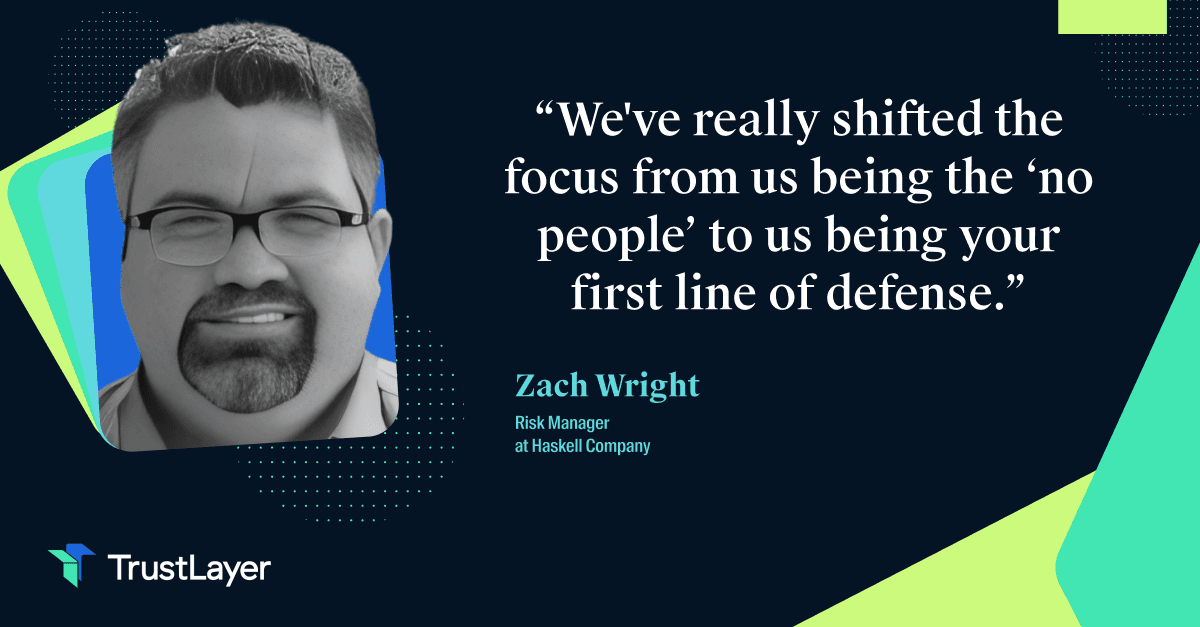In the fast-paced world of supply chain management, keeping track of certificates of insurance (COIs) is essential for mitigating risks and ensuring compliance. However, managing numerous COIs manually can be a time-consuming and error-prone process. This is where risk management software comes into the picture. By streamlining COI tracking and providing robust risk management capabilities, this software revolutionizes the way supply chain professionals manage their operations.
Understanding Risk Management Software
Before delving into the specifics of how risk management software works for supply chain COI tracking, let's first establish a clear understanding of this powerful tool. At its core, risk management software enables organizations to identify, assess, and mitigate potential risks. It empowers businesses to proactively address vulnerabilities and protect their assets, reputation, and bottom line.
But how does risk management software achieve all of this? Let's take a closer look.
The Basics of Risk Management Software
Risk management software provides a comprehensive platform to centralize risk-related data, facilitate collaboration, and automate processes. It offers features like risk assessment, incident reporting, documentation management, and real-time analytics. By leveraging these capabilities, organizations gain invaluable insights into their risk landscape, enabling them to make informed decisions and take proactive measures.
Imagine a scenario where a company is operating in a complex supply chain network. With risk management software, they can easily identify potential risks, such as supplier non-compliance or inadequate insurance coverage. The software allows them to streamline their risk assessment process, ensuring that all relevant data is captured and analyzed. This not only saves time but also provides a holistic view of the organization's risk exposure.
Key Features of Risk Management Software
When it comes to COI tracking in the supply chain, risk management software offers several key features that streamline the process and maximize efficiency. These features include:
- Automated COI Monitoring: Risk management software automates the tracking and monitoring of COIs, eliminating the need for manual record-keeping and reducing human error. This means that organizations can have peace of mind, knowing that their COI records are always up to date and accurate.
- Alerts and Notifications: The software sends alerts and notifications when COIs are about to expire or fail to meet the required coverage limits, ensuring timely action and minimizing compliance risks. This proactive approach helps organizations stay on top of their COI requirements and avoid any potential disruptions in the supply chain.
- Document Management: Organizations can upload and store COIs, contracts, and other relevant documents within the software, creating a centralized repository and simplifying document retrieval. This not only improves efficiency but also enhances transparency, as stakeholders can easily access and review the necessary documentation.
- Compliance Tracking: Risk management software enables organizations to track compliance with insurance requirements, ensuring that all suppliers, vendors, and contractors maintain valid and adequate insurance coverage. This feature helps mitigate the risk of working with uninsured or underinsured parties, safeguarding the organization from potential financial losses.
- Reporting and Analytics: The software generates customizable reports and provides real-time analytics, allowing organizations to assess risk exposure, identify trends, and make data-driven decisions. With the ability to visualize and analyze risk data, organizations can proactively identify areas of improvement and implement targeted risk mitigation strategies.
By leveraging these key features, risk management software becomes an indispensable tool for organizations seeking to optimize their supply chain COI tracking processes. It not only simplifies and automates tasks but also provides valuable insights that enable proactive risk management.
The Role of Risk Management Software in Supply Chain
Now that we understand the basics of risk management software, let's explore its vital role in supply chain operations. With the increasing complexity and interconnectedness of supply chains, the need for efficient risk management practices has become paramount.
Effective risk management software not only helps in identifying and assessing risks but also plays a crucial role in developing risk mitigation strategies and ensuring business continuity. By integrating risk management software into supply chain operations, organizations can create a proactive approach towards risk management, thereby safeguarding their operations from potential disruptions.
Enhancing Supply Chain Efficiency
Risk management software enhances supply chain efficiency by streamlining processes, reducing manual tasks, and automating workflows. With real-time visibility into COIs and robust analytics, organizations can make informed decisions, optimize supplier relationships, and enhance overall supply chain performance.
Moreover, the implementation of risk management software fosters collaboration among different stakeholders within the supply chain ecosystem. By providing a centralized platform for risk assessment and management, the software enables seamless communication and coordination, leading to improved operational efficiency and responsiveness to changing market dynamics.
Mitigating Supply Chain Risks
Supply chain risks can be wide-ranging, from disruptions caused by natural disasters to compliance issues and supplier failures. Risk management software empowers organizations to proactively identify and mitigate these risks by implementing appropriate controls, monitoring key indicators, and maintaining a comprehensive risk management framework.
Furthermore, the data-driven insights generated by risk management software enable organizations to conduct scenario analysis and develop contingency plans to address potential risks effectively. By leveraging predictive analytics and risk modeling capabilities, businesses can enhance their risk preparedness and resilience, ensuring continuity in supply chain operations even in the face of unforeseen challenges.
COI Tracking in Supply Chain: An Overview
Now that we've explored the role of risk management software in supply chain operations, let's turn our attention specifically to COI tracking and its significance in supply chain management.
Ensuring a robust COI tracking system is in place is crucial for organizations looking to maintain a resilient and secure supply chain network. By meticulously monitoring and verifying certificates of insurance (COIs), companies can proactively manage potential risks and safeguard their operations against unforeseen disruptions.
What is COI Tracking?
Certificates of insurance (COIs) serve as proof of insurance coverage for suppliers, vendors, and contractors. COI tracking involves maintaining an up-to-date record of these certificates, ensuring that they meet the required coverage limits and compliance standards set by the organization.
Effective COI tracking goes beyond just collecting certificates; it involves a comprehensive review process that verifies the authenticity of the documents, checks for any discrepancies, and monitors expiration dates to prevent lapses in coverage. This meticulous approach helps organizations uphold high standards of risk management and compliance within their supply chain.
The Importance of COI Tracking in Supply Chain
COI tracking is vital in supply chain management for several reasons. Firstly, it provides organizations with reassurance that their suppliers and contractors carry adequate insurance coverage, protecting them against potential liabilities and financial losses. Secondly, it enables compliance with regulatory requirements and contractual obligations. Finally, COI tracking mitigates risk by identifying gaps in insurance coverage and facilitating timely remediation.
Moreover, in an increasingly complex business environment where supply chains are interconnected globally, COI tracking serves as a critical tool for promoting transparency and accountability. By maintaining a clear record of insurance coverage across all partners and vendors, companies can enhance trust, streamline communication, and foster stronger relationships based on mutual understanding and compliance.
How Risk Management Software Facilitates COI Tracking
With the understanding of COI tracking and its importance firmly established, let's explore how risk management software revolutionizes this critical process.
But before we dive into the details, let's take a step back and understand the broader context of risk management software. Risk management software is a powerful tool that helps organizations identify, assess, and mitigate risks across various aspects of their operations. From financial risks to operational risks, this software provides a comprehensive solution to safeguard businesses from potential threats.
Now, let's focus on the integration of COI tracking in risk management software. This seamless integration allows organizations to consolidate all relevant data and documentation in one centralized platform. Gone are the days of manual record-keeping and the tedious task of sifting through piles of paperwork. With risk management software, organizations can effortlessly track and manage certificates of insurance (COIs) in real-time.
But what are the benefits of using risk management software for COI tracking? Let's explore:
- Minimize Compliance Risks: By automating COI tracking, organizations can reduce the risk of non-compliance and associated penalties. The software ensures that all required COIs are up to date and in compliance with regulatory standards.
- Improve Efficiency: Automated processes and real-time alerts significantly improve efficiency, allowing organizations to focus on core tasks. No more wasting time on manual data entry or chasing down missing COIs.
- Enhance Collaboration: Risk management software facilitates collaboration among stakeholders by providing a centralized platform for communication and document sharing. This fosters transparency and streamlines the COI tracking process.
- Make Informed Decisions: Real-time analytics and reporting capabilities enable organizations to make data-driven decisions, identify trends, and implement effective risk mitigation strategies. With comprehensive insights at their fingertips, organizations can proactively address potential risks.
But that's not all. Risk management software also offers additional features that further enhance COI tracking. For example, some software solutions provide automated renewal reminders, ensuring that organizations never miss an important COI renewal deadline. Others offer customizable dashboards and reports, allowing organizations to visualize their COI compliance status at a glance.
In conclusion, risk management software revolutionizes COI tracking by seamlessly integrating it into a centralized platform. With automated processes, real-time visibility, and a range of additional features, organizations can effectively manage compliance risks, improve efficiency, enhance collaboration, and make informed decisions. So, if you're still relying on manual methods for COI tracking, it's time to consider embracing the power of risk management software.
Choosing the Right Risk Management Software for COI Tracking
When selecting risk management software for COI tracking, organizations should consider several critical factors:
Factors to Consider
- Flexibility: The software should be flexible enough to adapt to the organization's unique requirements and grow alongside the business.
- Intuitive User Interface: An easy-to-use and intuitive interface ensures seamless adoption and minimizes training time.
- Integration Capabilities: The software should integrate smoothly with existing systems and platforms to avoid disruptions in workflow.
- Comprehensive Support: Access to dedicated customer support and resources is essential for maximizing the software's potential and troubleshooting any issues that arise.
Evaluating Different Risk Management Software Options
When evaluating different risk management software options, organizations should consider factors like reputation, customer reviews, and industry experience. Furthermore, seeking recommendations from trusted industry peers can provide valuable insights into the most effective solutions available.
Reputation is an important factor to consider when choosing risk management software. It is crucial to select a software provider with a proven track record of delivering reliable and efficient solutions. Customer reviews can provide valuable insights into the software's performance and user satisfaction. By reading reviews and testimonials from other organizations, one can gain a better understanding of the software's strengths and weaknesses.
Industry experience is another critical aspect to evaluate. A software provider with extensive experience in the risk management field will have a deeper understanding of the challenges and requirements specific to COI tracking. They will be better equipped to provide tailored solutions that meet the organization's needs.
Additionally, seeking recommendations from trusted industry peers can provide valuable insights into the most effective solutions available. By reaching out to colleagues and partners in the same industry, organizations can gather firsthand information about the software's performance, ease of use, and overall effectiveness in COI tracking.
In conclusion, risk management software plays a significant role in supply chain COI tracking. By automating processes, providing real-time insights, and streamlining compliance efforts, this software empowers organizations to effectively manage risks and ensure smooth supply chain operations. With the increasing complexities of the modern supply chain, embracing risk management software has become crucial for staying ahead of the curve and safeguarding business success.
Embrace the future of risk management with TrustLayer, the leading COI tracker designed for the modern risk manager. Say goodbye to the cumbersome, manual process of verifying compliance documents. TrustLayer automates and streamlines the collection, storage, and verification of COIs, transforming it into a seamless, efficient, and cost-effective operation. Join the hundreds of thousands of companies that have already elevated their vendor document management and compliance tracking with our innovative technology. Don't let outdated methods hold you back. Set up a time to talk with our team and discover how TrustLayer can revolutionize your supply chain risk management today.








